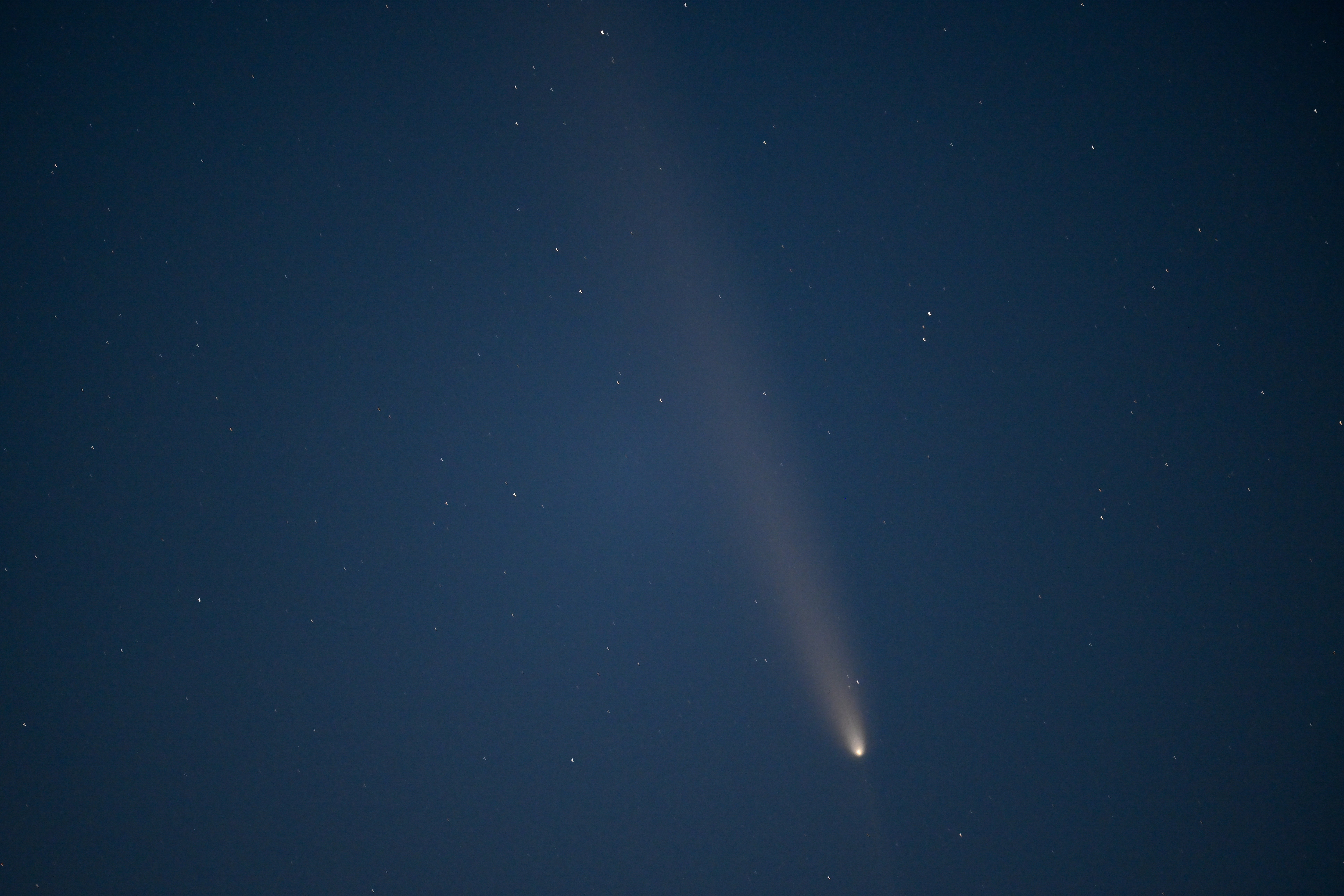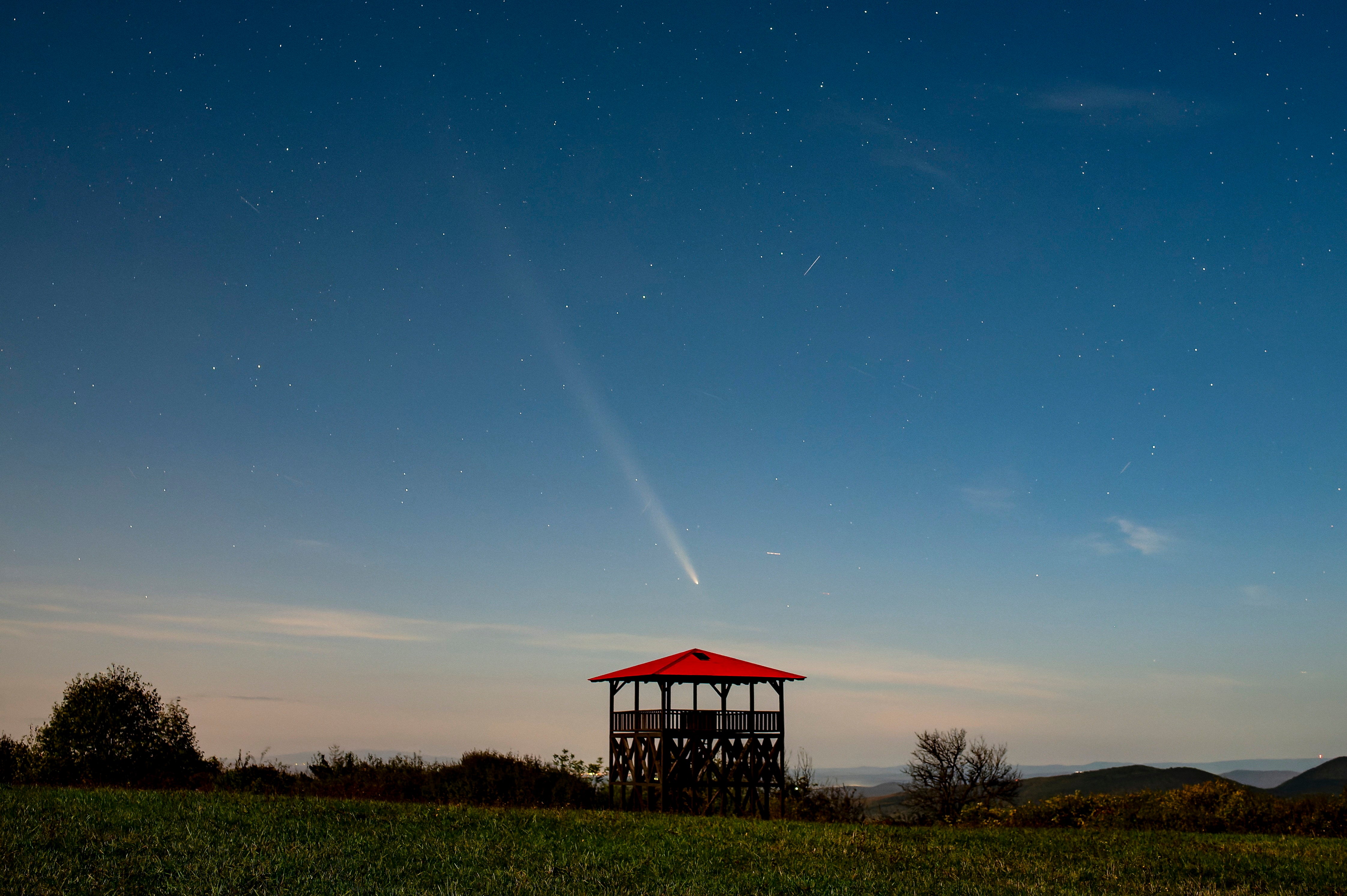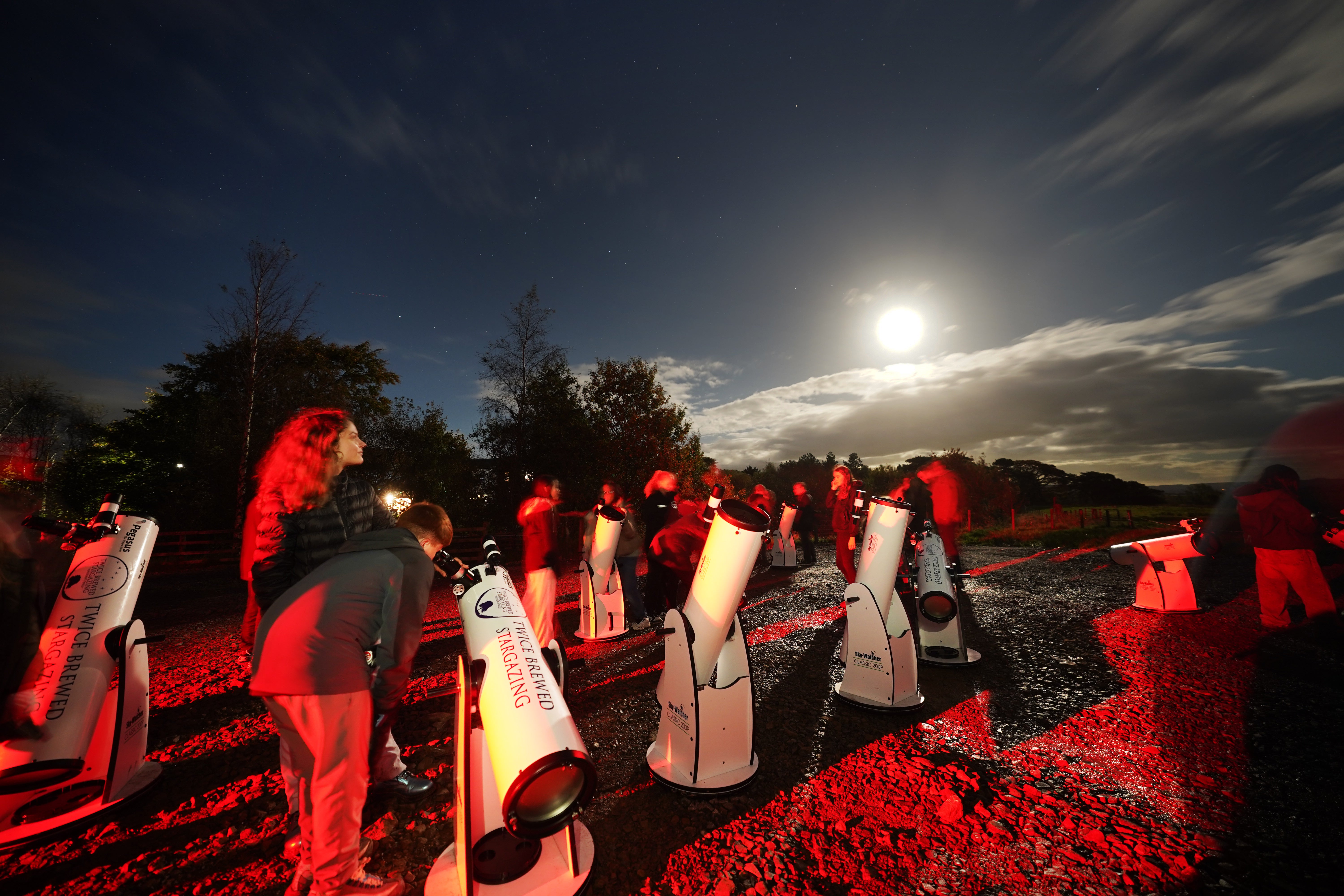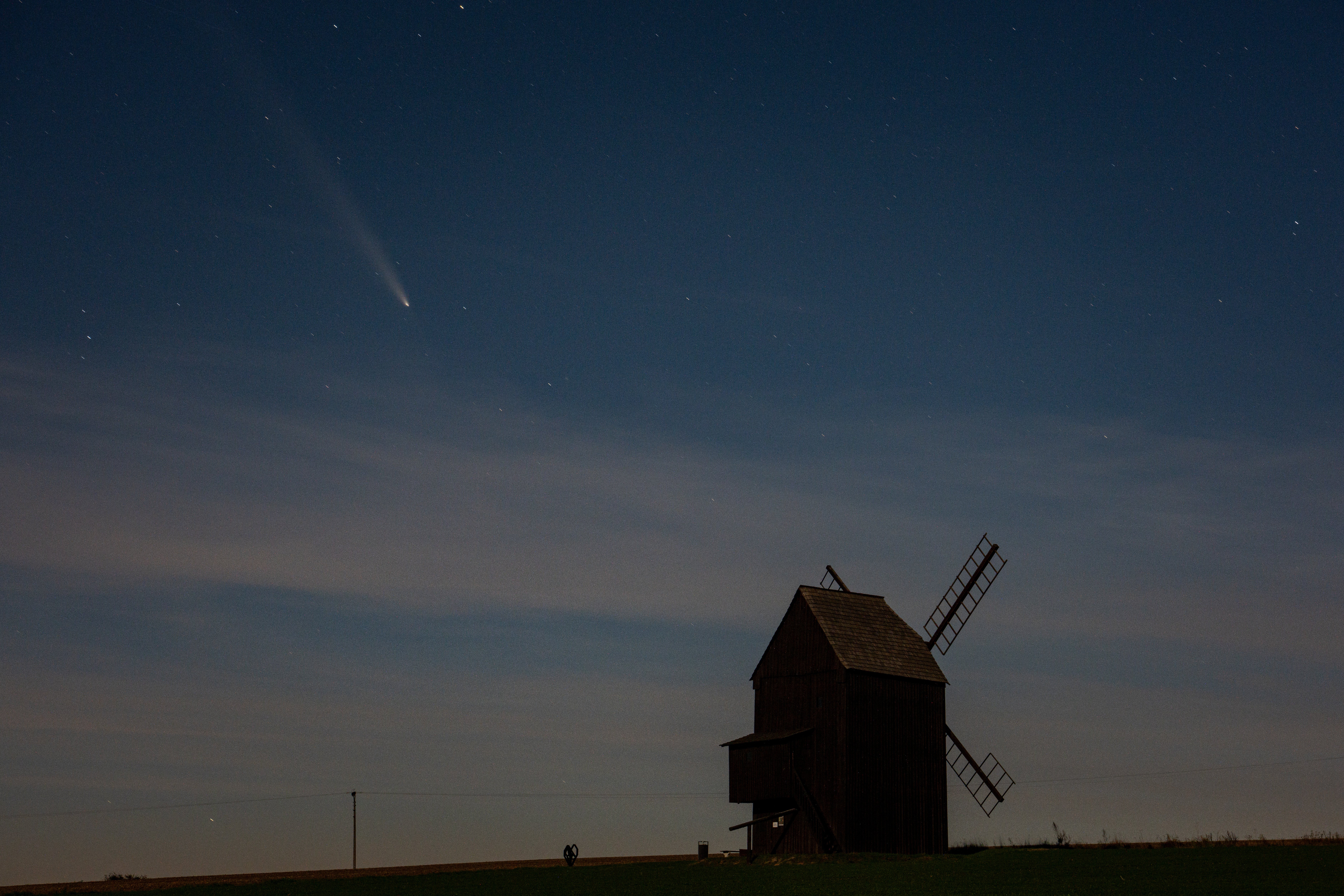A comet last seen from Earth roughly 80,000 years ago was spotted from North-East England, and could be seen again this month.
The C/2023 A3 (Tsuchinshan–ATLAS) was only discovered in January last year but astronomers said it would last have been visible when Neanderthals were alive. It has been called “the comet of the century” because of how bright and visible it could be, according to the Royal Astronomical Society (RAS).
The comet passed through the dark skies in Northumberland last week, thrilling skygazers armed with telescopes at the Northumberland International Dark Sky Park.
There is a chance it will be spotted again this month.
Dr Greg Brown, astronomer at Royal Observatory Greenwich, said the comet “is visible in the early evening skies from the UK”.

Dr Brown told the PA news agency: “Low on the horizon at sunset, it is best to wait a while for the sky to darken a bit before trying to see it.
“Look to the west, just to the left of where the sunset was and, if you are lucky, it should be just about visible to the unaided eye.
“However, as it is rapidly fading as the days go on, a pair of binoculars or a small telescope will certainly help if you are struggling to find it.
“It is visible across the country, though a low western horizon is a must, and it certainly wouldn’t hurt to be out in the countryside where light pollution is less of a problem.”

Between October 12 and 30, people may be able to see the comet using binoculars or even with the naked eye.
Comets are made of dust, ice and small rocky particles and are often described as “dirty snowballs”.
They orbit the sun in much the same way as planets but follow a more elliptical path.
As they get close to the sun, the comets begin to warm, causing the more volatile materials such as the gases and ices trapped in the comet to escape from the inside through cracks in the crust.
Astronomers say this can make it hard to foresee the path that a comet will take while passing through the solar system.

Dr Megan Argo, an astrophysicist at the University of Central Lancashire, said: “Comets are notoriously difficult to accurately predict in advance.”
She said these celestial objects can develop “tails” when their nuclei – the rocky and icy core – break apart.
This tail of gas and dust can become “bright enough to easily see with the unaided eye, possibly even during daylight if you know where to look”, she added.

The comet was first seen on September 29 in some countries in the Southern Hemisphere, but came back into view last week, appearing “brighter” in the night skies.
It was pictured across Europe.
Dr Argo said: “It is important to note here that since comets are fuzzy blobs on the sky, rather than having the point-like appearance of stars, this brightness will be more spread out on the sky.”

